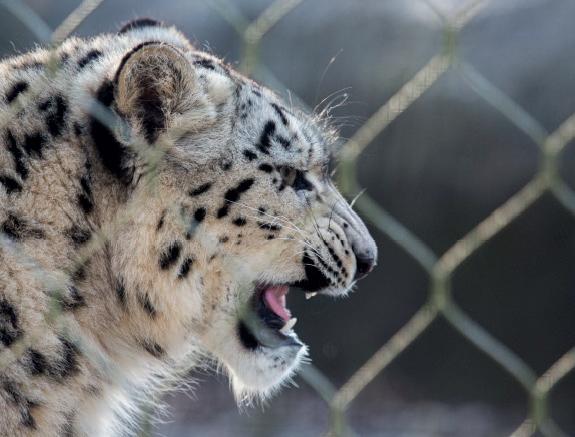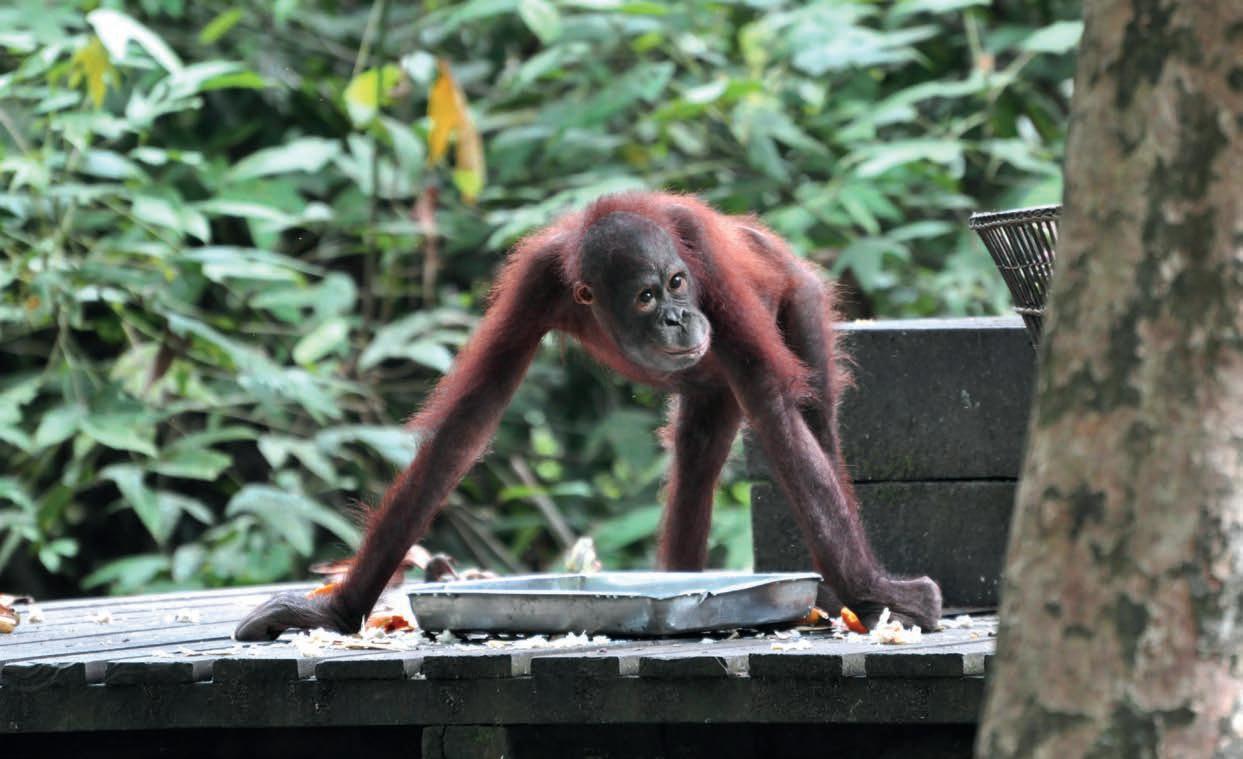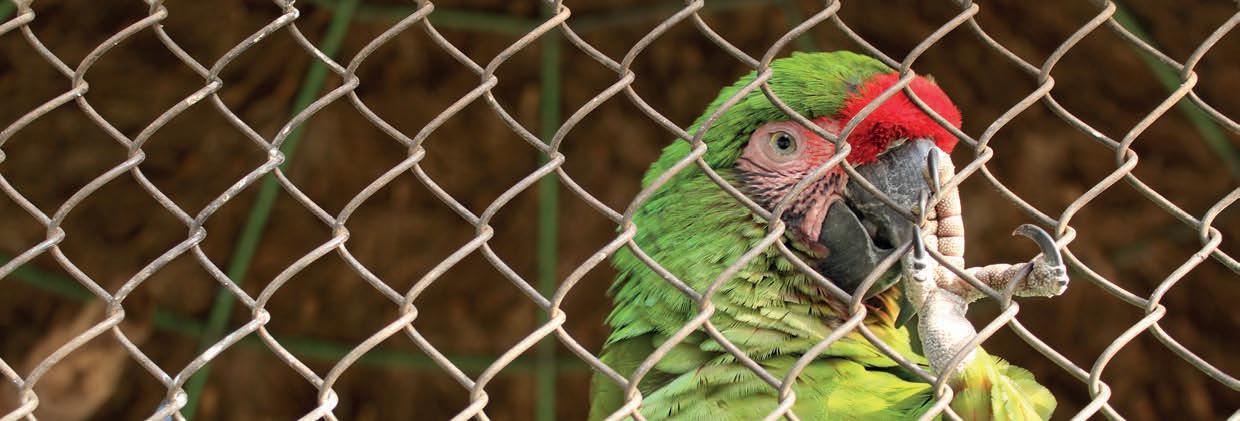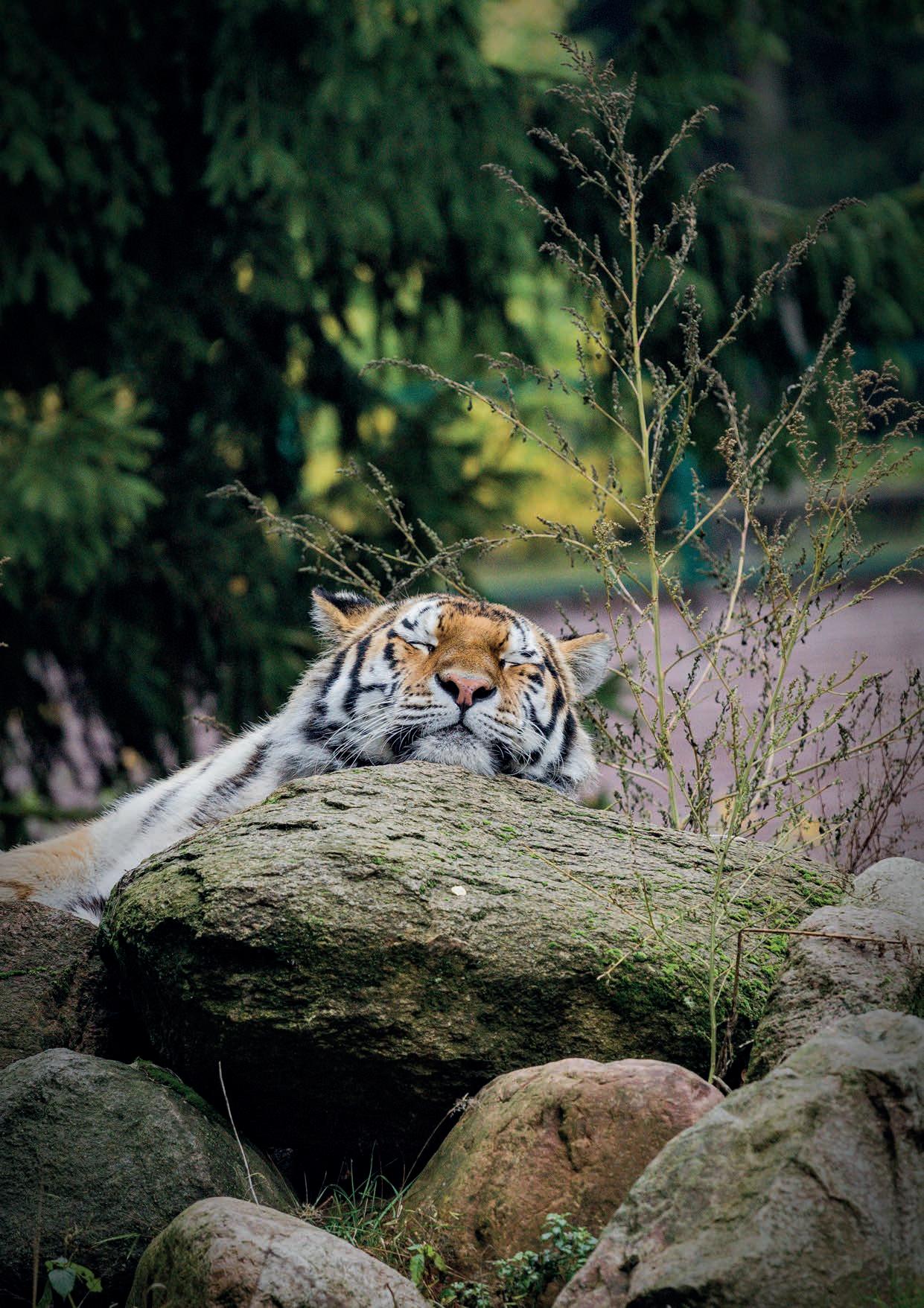
6 minute read
ANIMALS IN CAPTIVITY
Animal Welfare: Animals in Captivity
GUIDANCE NOTES THE CAMP WAY
Is the captive environment suitable for the animals being held there?
Animal species have evolved over thousands of generations, both physically and behaviourally, in order to optimise their chances of survival in the wild. In captivity, animals can face a number of challenges for which evolution has not prepared them; the geographical location, climate and even enclosures.
The Five Freedoms are internationally accepted standards of care and welfare that all animals should receive as a minimum standard of humane treatment:
Freedom from hunger and thirst: access to fresh water and a diet to maintain full health and vigour.
Freedom from discomfort: by providing an appropriate environment including shelter and a comfortable resting area.
Freedom from pain, injury or disease: by prevention or rapid diagnosis and treatment. Freedom from fear and distress: by ensuring conditions and treatment which avoid mental suffering. CI ensures the following as a minimum requirement:
All animals have regular, daily access to adequate and clean drinking water in line with their speciesspecific needs.
All animals are fed appropriate food via an appropriate feeding routine.
The feeding regime must mentally stimulate the animal(s) and encourage expression of natural behaviours.
Enclosures allow all animals to move and exercise freely and to maintain sufficient distance from other animals in case of conflict. Enclosures are environmentally complex, including natural substrate, shelter and environmental enrichment to encourage natural behaviours.
Facility employs a vet who is knowledgeable and experienced in the health and welfare of the relevant animals.
GUIDANCE NOTES THE CAMP WAY
Is the captive environment suitable for the animals being held there?
(continued)
Do the animals have access to the same conditions as if they were in the wild (i.e. food, space, social interactions)?
Freedom from fear and distress: by ensuring conditions and treatment which avoid mental suffering.
Wild animals have strong instincts to run, hunt, and interact with other animals. To deliver high standards of welfare, these conditions may need to be provided artificially or compensated for. Inappropriate conditions can cause damage to mental and physical health leading to behaviour problems, diseases and early mortality. Unskilled volunteers do not work directly with wild animals.
Visitors should not be permitted to take photographs with wild animals.

GUIDANCE NOTES THE CAMP WAY
Is there a clear reason for wild animals being kept in a domestic setting?
Some wild animals are exploited for tourism, such as elephants used for rides. In other cases, wild animals are rescued from unsafe situations in the wild.
Does the programme involve a visit to an animal sanctuary?
(An animal sanctuary is a facility that rescues injured, confiscated, orphaned or abandoned animals and provides short or long-term refuge and/or rehabilitation) Many visitor attractions call themselves a ‘sanctuary’ when in fact they are simply a tourist attraction that is unregulated, often with little or no animal welfare considerations. Animals are only kept away from their natural environment in extenuating circumstances.
The sanctuary should have all relevant regional, national and local government permits and licences.
Animal sanctuaries should not allow animals to breed or replace animals.
CI only works with or visits organisations where there is a clear and ethical reason why the animals are not living in the wild, and there is a clear long-term plan for the animal’s welfare. The animals should not be captive for tourism purposes.
Animal Welfare: Animals in Captivity
GUIDANCE NOTES THE CAMP WAY
Are animals being prepared to be released back into the wild?
Does the organisation/ activity involve marine mammals in captivity?
Many organisations house wild animals on a short-term basis in order for them to be reintroduced into the wild. In these cases, their interactions with humans should be minimised and not offered by untrained volunteers or visitors. CI avoids volunteer contact with animals that are due to be released into the wild and
It is unnatural and detrimental for marine mammals like dolphins, whales, sea lions and polar bears to be kept in captivity for entertainment purposes. CI prohibits all experiences involving marine mammals in captivity, except for certain limited observational experiences in which a validated
Is the captive environment registered with the relevant authorities and regularly inspected?
Around the world, varying degrees of regulation exist with regards to animal attractions. Additionally, there are a number of professional associations which they can join which regulate their members to ensure best practice and high welfare standards. CI only works with organisations that hold complete, accurate animal stock lists, veterinary records and any appropriate and up to date licences that can be inspected. This paperwork should be in place for any animals which have been acquired from the wild.
The facility should ideally be a member of a professional trade organisation that prioritises animal welfare and have appropriate insurance in place.
obtains verifiable evidence of animals being released.
non-profit is conducting rescue or rehabilitation.
Animal Welfare: Animals in Captivity
Does the organisation/ activity include unacceptable practices involving animals in captive attractions? GUIDANCE NOTES THE CAMP WAY
Certain activities are widely recognised as having a detrimental impact on animal welfare, and in some cases, they may present a high risk to visitor safety.
These include:
Animals on display in restaurants and entertainment venues involving bad practice including but not limited to dolphin shows, circuses, animal amusement parks and travelling petting zoos Animal breeding or commercial trade in sanctuaries and orphanages. Animals used as photographic props involving bad practice Animal performances based on non-natural behaviours and shows where training methods compromise welfare Surgical or physical modification of the skin, tissues, teeth or bones of an animal, other than for the purposes of genuine medical treatment CI does not condone any of these practices and has a responsibility to report such activity to the relevant organisations and/or authorities if it is considered appropriate.

GUIDANCE NOTES THE CAMP WAY
Does the organisation/ activity include unacceptable practices involving animals in captive attractions? (...continued)
Attractions involving direct interactions with big cats Allowing guests to ride, bathe or feed elephants or other tame wild animals in captivity Canned hunting, elephant polo, ostrich riding and unlicensed zoos
Does the organisation/ activity include unacceptable practices involving animals in cultured events and activities?
These include:
Animals used for begging (e.g. dancing bears, snake charming, primates) Bear baiting, bile farms, bear pits Bull fighting and bull running Cock-fighting Reptile farms Crocodile and alligator wrestling Tiger farms Greyhound racing and dog sled racing Horse racing and horse polo Surgery or physical modification of the animal other than for the purposes of medical treatment Ritual animal slaughter Feeding animals with live vertebrate prey CI does not condone any of these practices and has a responsibility to report such activity to the relevant organisations and/or authorities when appropriate.

Animal Welfare: Animals in Captivity
Are animals subject to invasive actions?
Are animals tethered or hobbled? GUIDANCE NOTES THE CAMP WAY
Invasive actions include restricted movement (chaining/ caging), trained using negative reinforcement or punishment, trained to perform unnatural behaviours, or making modifications to the normal physiology of animals to reduce risks when handling (e.g. declawing, tooth extraction). Any form of invasive action causes severe harm and distress to an animal. CI only works with organisations that have a proven track record of high animal welfare. CI never works with organisations that use invasive actions.
Tethering or hobbling are forms of restraint that prevent animals from evading danger. Both forms should be discouraged and where absolutely unavoidable should only be conducted using appropriate materials and methods that do not cause risk to the animal’s welfare. CI ensures that tethering or hobbling of an animal only occurs when absolutely necessary and does not impact the welfare of the restrained animal.
Tethering must be limited to only a few hours each day and the animal is able to walk, lie down and stand up without putting tension on the tether, and is able to access basic resources like food, water and shade.
Tethered animals are regularly monitored.










